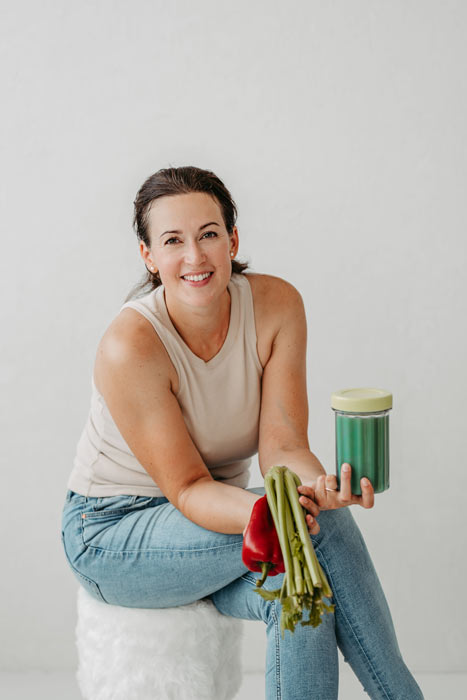What Does “Eat the Rainbow” Really Mean?
“Eat the rainbow” refers to consuming fruits and vegetables of different colors—reds, oranges, yellows, greens, blues/purples, and even whites/browns—to ensure you get a broad spectrum of nutrients. Each hue signals the presence of unique compounds called phytochemicals, which plants produce to protect themselves from pests, UV light, and disease. When you eat these colorful foods, you benefit from their protective effects too, as many phytochemicals act as antioxidants, anti-inflammatories, or immune boosters in the human body.
The Health Benefits of a Colorful Diet
A diet rich in colorful fruits and vegetables is one of the easiest ways to:
- Boost immune function with vitamin C, beta-carotene, and zinc
- Reduce chronic inflammation thanks to anti-inflammatory flavonoids and carotenoids
- Support heart health by lowering blood pressure and improving arterial function
- Enhance vision through lutein and zeaxanthin in green and yellow produce
- Promote glowing skin with antioxidants that combat free-radical damage
By aiming to “eat the rainbow,” you naturally diversify your intake of these key nutrients and phytochemicals, rather than relying on supplements alone.
Red Foods: Power Players for Heart Health
Red fruits and vegetables are loaded with lycopene, anthocyanins, and vitamin C—compounds linked to cardiovascular protection.
- Tomatoes: Lycopene content increases when cooked, making tomato sauces and soups heart-healthy choices.
- Watermelon: More than 90% water, plus citrulline, which may improve blood flow and reduce muscle soreness.
- Strawberries & Cherries: Rich in anthocyanins that help lower LDL (“bad”) cholesterol.
Catchy fact: Lycopene gives tomatoes and watermelon their red hue and may help reduce the risk of prostate cancer in men.
Orange & Yellow: Sunshine on Your Plate
The bright oranges and yellows in produce signify high levels of beta-carotene, lutein, and zeaxanthin—nutrients vital for eye health and skin protection.
- Carrots & Sweet Potatoes: Beta-carotene converts to vitamin A, essential for night vision and immune function.
- Bell Peppers & Mangoes: Packed with vitamin C and flavonoids, they boost collagen production and skin elasticity.
- Pumpkin & Butternut Squash: High in fiber and potassium, supporting digestion and healthy blood pressure.
Interesting tidbit: A single cup of cooked sweet potato provides over 1,400% of your daily vitamin A needs—without any supplements!
Green Foods: The Detox Champions
Green produce often contains chlorophyll, fiber, folate, and vitamins K and E—supporting detoxification, bone health, and circulation.
- Leafy Greens (Spinach, Kale, Swiss Chard): Rich in folate for DNA synthesis and repair, plus vitamin K for strong bones.
- Broccoli & Brussels Sprouts: Sulforaphane in cruciferous veggies has been studied for its cancer-fighting potential.
- Avocado & Kiwi: Healthy monounsaturated fats in avocado aid nutrient absorption; kiwi delivers serotonin precursors for mood support.
Fun fact: Chlorophyll gives plants their green color and may help bind toxins in the digestive tract, aiding natural detox processes.
Blue & Purple Foods: Brain Boosters and Beyond
Deep-hued berries and vegetables owe their vibrant colors to anthocyanins—powerful antioxidants linked to cognitive health.
- Blueberries & Blackberries: Studies show regular consumption can improve memory and delay age-related cognitive decline.
- Purple Cabbage & Eggplant: Anthocyanins also help regulate blood sugar and may protect against type 2 diabetes.
- Purple Carrots & Figs: Contain unique phytonutrients that support skin health and fight inflammation.
Eye-opening stat: Anthocyanin levels are highest in berry skins—so enjoy them whole, fresh or frozen, for maximum benefits.
White & Brown Foods: Often Overlooked Nutrient Sources
Whites and browns may not be as flashy, but they deliver important compounds like allicin, potassium, and prebiotic fibers.
- Garlic & Onions: Contain allicin, known for its antibacterial, antiviral, and cardiovascular benefits.
- Cauliflower & Mushrooms: Provide fiber, B vitamins, and antioxidants like ergothioneine, linked to longevity.
- Potatoes & Bananas: Rich in potassium, supporting healthy blood pressure and muscle function.
Surprising fact: Mushrooms are the only non-animal source of vitamin D when exposed to UV light—perfect for plant-based diets.
7 Fascinating Phytochemical Facts
- Color-coded protection: The more intense the color, the higher the concentration of protective phytochemicals.
- Purple power: Anthocyanins can cross the blood-brain barrier, directly benefiting brain cells.
- Cooking boosts bioavailability: Lightly steaming carrots and tomatoes can increase antioxidant absorption.
- Fiber synergy: Many phytochemicals work best in the presence of dietary fiber, so eat whole produce.
- Phytoestrogens: Found in soybeans and legumes, these plant hormones may ease menopausal symptoms.
- Seasonal variety: Different phytonutrient profiles throughout the year mean “eating the rainbow” is an ongoing adventure.
- Gut-health link: Colorful fruits and veggies feed beneficial gut bacteria, creating a healthier microbiome.
5 Easy Ways to Eat More Colorful Produce
- Smoothie bowls: Layer strawberries, spinach, blueberries, and bananas for a rainbow breakfast.
- Roasted veggie medley: Toss red peppers, orange squash, green broccoli, and purple carrots with olive oil.
- Rainbow salads: Combine mixed greens with cherry tomatoes, yellow bell pepper, shredded purple cabbage, and radish.
- Snack plates: Swap chips for sliced cucumbers, carrot sticks, hummus, and beetroot chips.
- Colorful stir-fries: Stir in snow peas, bell peppers, shiitake mushrooms, and onions for a nutrient-packed dinner.
Conclusion: Make Every Meal a Rainbow
Embracing the “eat the rainbow” approach isn’t restrictive—it’s liberating. You aren’t limited to a handful of “superfoods”; instead, you’re encouraged to explore the full palette of nature’s bounty. By prioritizing colorful fruits and vegetables in every meal, you naturally cover your nutritional bases, reap disease-fighting benefits, and keep your plate—and palate—exciting. Start small: add one extra color to your next meal, then another. Before you know it, eating the rainbow will become second nature, and your body will thank you in vibrant, healthy ways.

